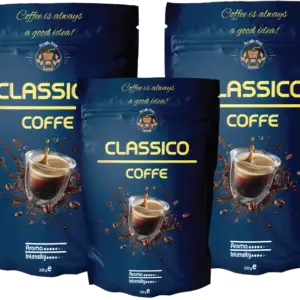They are an essential component in the coffee supply chain, playing a crucial role in maintaining the quality and freshness of one of the world’s most beloved beverages. Over the years, these bags have evolved significantly to meet the demands of consumers and producers alike. The company’s new eco-friendly Coffee Beans Packaging Bags are designed to keep the beans fresh while reducing environmental impact.
Historical Context
Historically, coffee beans were often packaged in simple burlap sacks. These sacks were functional but not very effective in preserving the freshness and aroma of the beans. The introduction of more advanced packaging solutions marked a turning point in the coffee industry, as producers began to realize that the quality of their coffee was directly linked to how well it was protected during transit and storage.
Types of Coffee Bean Packaging Bags
Foil Bags:
Foil bags are a popular choice in the coffee industry due to their excellent barrier properties. They are made from multiple layers of materials, including foil, which prevents light, air, and moisture from affecting the coffee beans. This type of packaging is ideal for maintaining the freshness and extending the shelf life of coffee. Foil bags are often used for high-quality, specialty coffees.
Kraft Paper Bags:
Kraft paper bags are made from recycled paper and are known for their durability and eco-friendliness. While they are less effective at preserving freshness compared to foil bags, they are still a popular choice for many roasters who prioritize sustainability. Often, kraft paper bags are lined with a layer of foil or plastic to enhance their barrier properties.
Plastic Bags:
Plastic bags, typically made from polyethylene or polypropylene, are another common option. They are lightweight and cost-effective, making them suitable for bulk packaging. However, they may not offer the same level of protection against environmental factors as foil or multi-layer bags.
Valve Bags:
Valve bags are designed with a one-way degassing valve that allows gases released by freshly roasted coffee to escape without letting air in. This type of bag is particularly useful for preserving the freshness of the coffee while preventing the bag from bursting due to pressure buildup. Valve bags are commonly used in the specialty coffee market.
Stand-Up Pouches:
Stand-up pouches are a modern and versatile packaging option. They can be made from various materials, including foil, plastic, and paper, and are designed to stand upright on store shelves. This type of packaging is convenient for both consumers and retailers and often includes features like resealable zippers for added freshness.
Materials and Technologies
The choice of material in coffee bean packaging is crucial for ensuring that the coffee remains fresh and aromatic. Key materials used in packaging include:
Foil:
Provides a strong barrier to light, oxygen, and moisture. Foil-lined bags are especially effective for preserving the freshness of coffee beans.
Kraft Paper:
Offers durability and is often used in combination with other materials to enhance its protective qualities.
Plastic:
Flexible and cost-effective, though it may not provide as strong a barrier as foil or multi-layered options.
Aluminum:
Used in conjunction with other materials to create multi-layered packaging solutions that offer superior protection.
Innovations in Coffee Bean Packaging
The coffee industry is constantly innovating to meet consumer preferences and environmental concerns. Some notable trends include:
Sustainability:
There is a growing emphasis on eco-friendly packaging solutions. Companies are exploring biodegradable materials, compostable bags, and recyclable options. Sustainable packaging not only helps reduce environmental impact but also appeals to environmentally conscious consumers.
Smart Packaging:
Advances in technology have led to the development of smart packaging solutions. These include packaging with QR codes that provide information about the coffee’s origin, roast date, and brewing recommendations. Some packaging even integrates sensors to monitor freshness and quality.
Design and Branding:
Packaging has become an important aspect of branding. Custom designs, attractive graphics, and innovative shapes help products stand out on the shelves. Packaging design can significantly influence consumer perception and purchasing decisions.
Convenience Features:
Modern packaging often includes features that enhance convenience, such as resealable zippers, easy-tear openings, and handles for portability. These features make it easier for consumers to store and use their coffee beans.
Extended Shelf Life:
Innovations in packaging technology continue to improve the shelf life of coffee beans. Enhanced barrier materials and advanced sealing techniques help in preserving the freshness and flavour of coffee for longer periods.
Conclusion
Coffee bean packaging bags have come a long way from the simple burlap sacks of the past. The evolution of coffee bean packaging reflects broader trends in technology, sustainability, and branding, illustrating the dynamic nature of the coffee industry. The latest advancements in Packaging Printing have allowed for more vibrant and intricate designs, enhancing product appeal on store shelves.
FAQs
What types of packaging are available for coffee beans?
Common types include foil bags, kraft paper bags, and resealable plastic bags.
What is a one-way valve used for in coffee bags?
It allows gases to escape without letting air in, preserving freshness.
Can coffee bean packaging be customized?
Yes, it can be customized with various sizes, designs, and branding options.
Are coffee bean packaging bags recyclable?
Recyclability depends on the materials; some are not easily recyclable.
How does packaging affect coffee bean freshness?
Proper packaging protects beans from oxygen, moisture, and light, preserving freshness.
